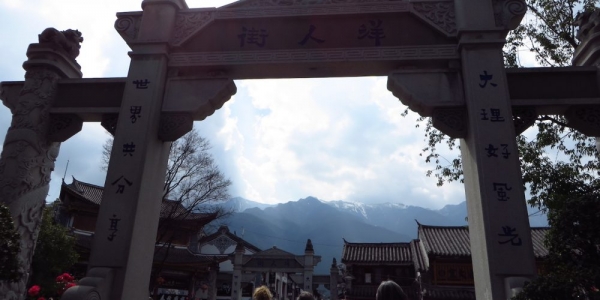“Mountain Futures”: Common patterns in global mountain landscapes

Earlier this year, we traveled more than halfway around the world for the conference “Mountain Futures: Nurturing Seeds for Change in the Anthropocene”, which was held from March 1-4 in Kunming, Yunnan Province, China. The conference was organized by a large group of Chinese and international organizations from the academic, civil society and private sectors. The conference was rather unique in that it emphasized ideas and practices (i.e. seeds) that have the potential to generate positive impacts on mountain people and environments. The diversity of backgrounds and areas of work of the participants was remarkable. Researchers, practitioners and representatives from local communities were able to exchange approaches and visions that highlighted the complexity of achieving sustainability goals in mountain landscapes.
One of the highlights of the meeting was the abundant evidence of efforts that articulate sustainability goals in mountain areas, particularly in Asia. The discussions made evident the need to articulate conceptual approaches, and to promote coordination and communication among actors to attain effective interventions. A key challenge is building processes that can be sustained over the long term to promote sustainability in complex mountain social and ecological systems. Ideally, coordinated efforts should enhance opportunities to generate more impacts along the lines of:
- Linking decision makers, local communities, and academic researchers.
- Promoting interdisciplinary approaches to study complex mountain social – ecological systems.
- Creating and strengthening collaborative networks for knowledge exchange, communication and collaboration among initiatives in mountain landscapes around the world.
- Promoting research and intervention strategies that link actors and processes at different scales (e.g., regional, national, local).
- Encouraging links between actors responsible for promoting sustainability along value chains (e.g., producers, intermediaries, urban consumers).
- Considering different visions and perspectives about mountain and their management centered around different rationalities, cultural and spiritual values.
In addition to promoting these linkages, the discussions at the conference emphasized the necessity of creating governance processes aligned with sustainability. Dialogue and decision making platforms should provide spaces where actors with different goals and rationalities can reach common grounds to attain land management alternatives that integrate the diversity of uses and benefits that mountain landscapes provide. These platforms should consider an adequate scale (e.g. watershed, landscape) for the sustainable management of common pool resources key for the livelihoods of local mountain populations.
A third major theme discussed during the conference was related to the need for strengthening communication and knowledge management. A general observation was that scientific knowledge needs to be communicated more effectively, in formats that are accessible to both decision makers and local communities. Communication strategies should go beyond common discourses that make oversimplified assertions linking rural mountain areas to poverty, and should make visible the benefits that healthy mountain landscapes provide for local populations, including the implications for food security, biodiversity conservation and water regulation.
Innovation and technology transfer were often cited as potent tools to promote sustainability. However, it was evident that technological solutions adapted to the particular conditions of mountain landscapes and their inhabitants are scarce. This generates important challenges as mountain landscapes offer unique conditions that make solutions that are applicable across regions difficult. Even solutions that address problems at a basic level (e.g. generating clean energy in isolated mountain areas) must be adapted to highly contingent social, economic and institutional factors at the local level.
Overall, the “seeds” for sustainable futures face important challenges to replicate and scale up to more complex and interconnected forests of innovation and sustainable development. A key remaining challenge is to promote conditions for the use, re-use and collaborative improvement of ideas and practices, taking into account human, social, environmental and technological processes. For future events with similar goals, the inclusion of additional, less structured spaces for the exchange of ideas and experiences, with an emphasis on addressing more specific problems for sustainability in mountain landscapes, is highly recommended.
Ronald Torres is a researcher based at the Imaymana Foundation, a local NGO that promotes sustainable development in the northwestern Andean forests of the Pichincha Province, Ecuador. His work focuses on best practices to promote sustainable land uses, including organic agriculture, agroforestry systems, forest restoration and water resource management. Additionally, he is actively working with local organizations of producers to promote robust and inclusive processes of natural resource governance with the incorporation of explicit sustainability goals.


Facebook comments